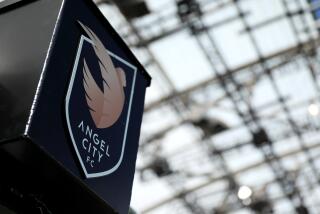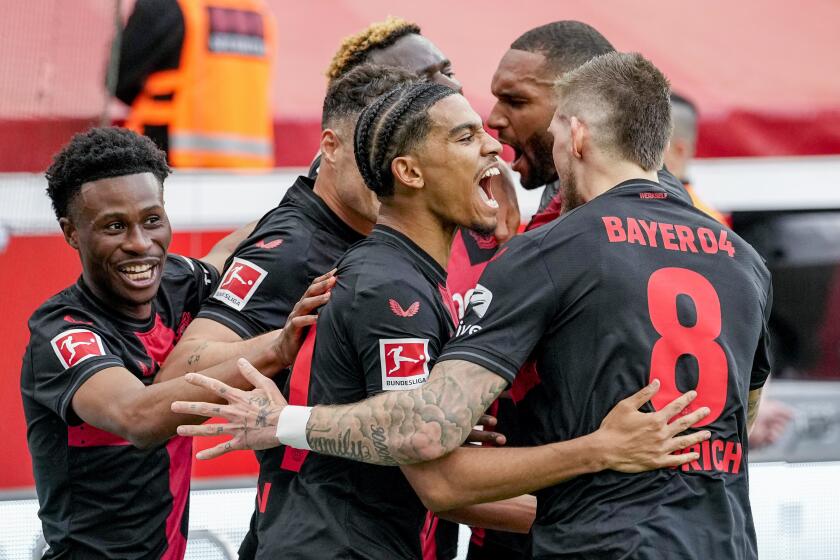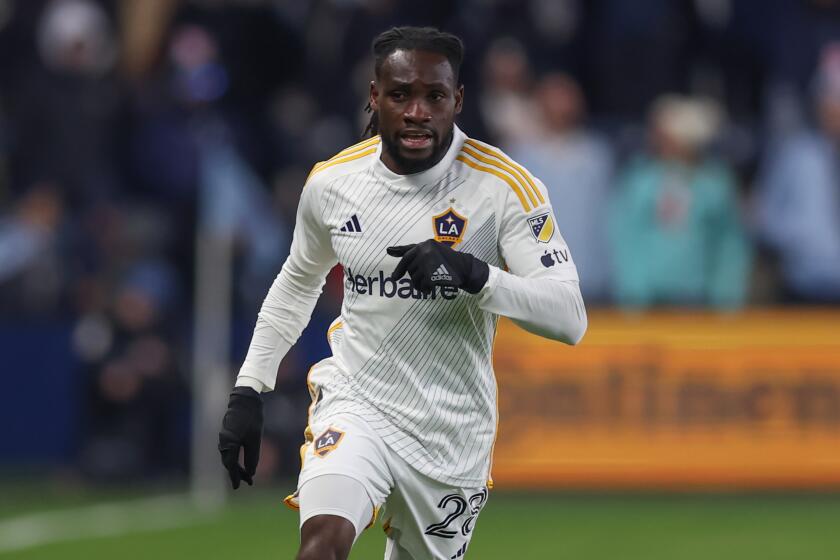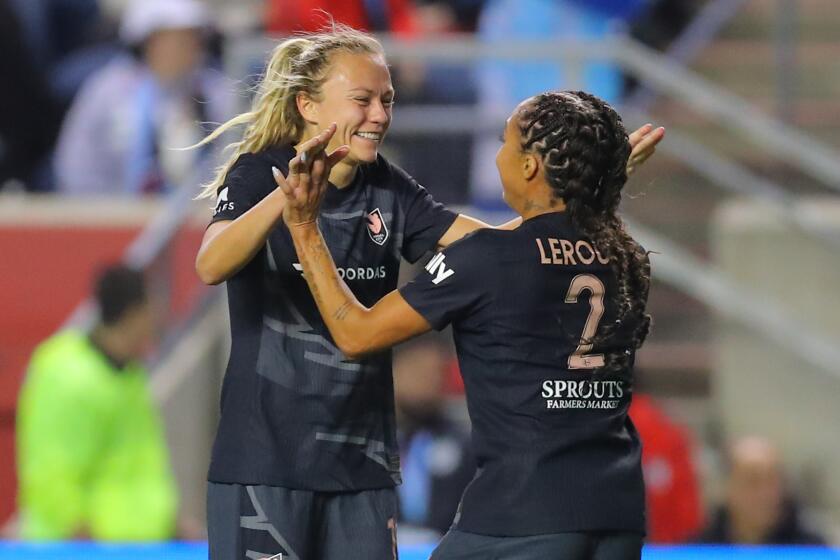Manchester City bets big on global expansion of its brand and sport
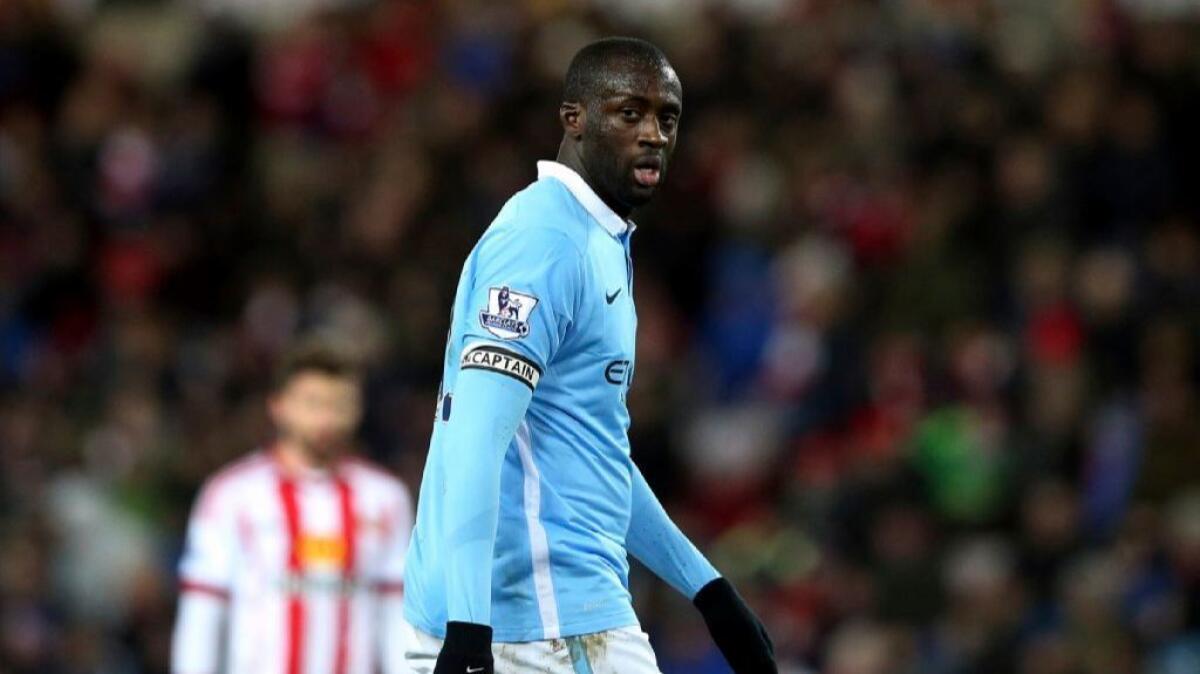
When Claudio Reyna played for Manchester City more than a decade ago, it was less a soccer club than a disaster.
Just two years removed from the second-tier Football League when Reyna arrived, City lost 48 times in his three full seasons there, narrowly escaping relegation again in 2006.
So it must have been a surprise for Reyna when he returned six years later, this time as an executive for the fledgling City Football Group, to find that the organization had become more a flourishing multinational corporation than a soccer club. A year after winning its first top-flight English title in 44 seasons, the team’s ownership created CFG and began expanding its brand to four continents.
It’s a model other European soccer clubs are now scrambling to follow because of the wide-ranging impact that goes beyond selling T-shirts and tickets.
“This is an evolution,” said Reyna, the sporting director for New York City FC, the group’s MLS affiliate.
“We’re already thinking ahead. We’re looking at what the football landscape’s going to be like in two or three years — globally, domestically in each of our leagues — and how we can get ahead of the competition.”
It’s part of a multibillion-dollar investment by City’s Abu Dhabi-based owners. And some of what that spending has bought will be on display Wednesday when Manchester City meets Real Madrid, winner of the last two Champions League crowns, in an exhibition at Los Angeles Memorial Coliseum.
A crowd of more than 75,000 is expected for the 8 p.m. kickoff, according to event organizers.
Expanding payrolls and spiraling expenses have long required European teams to make summer barnstorming tours of the U.S. and Asia, where they briefly plant their flag, glad-hand some sponsors and pick up a few oversize checks. But lately even that hasn’t been enough to make ends meet.
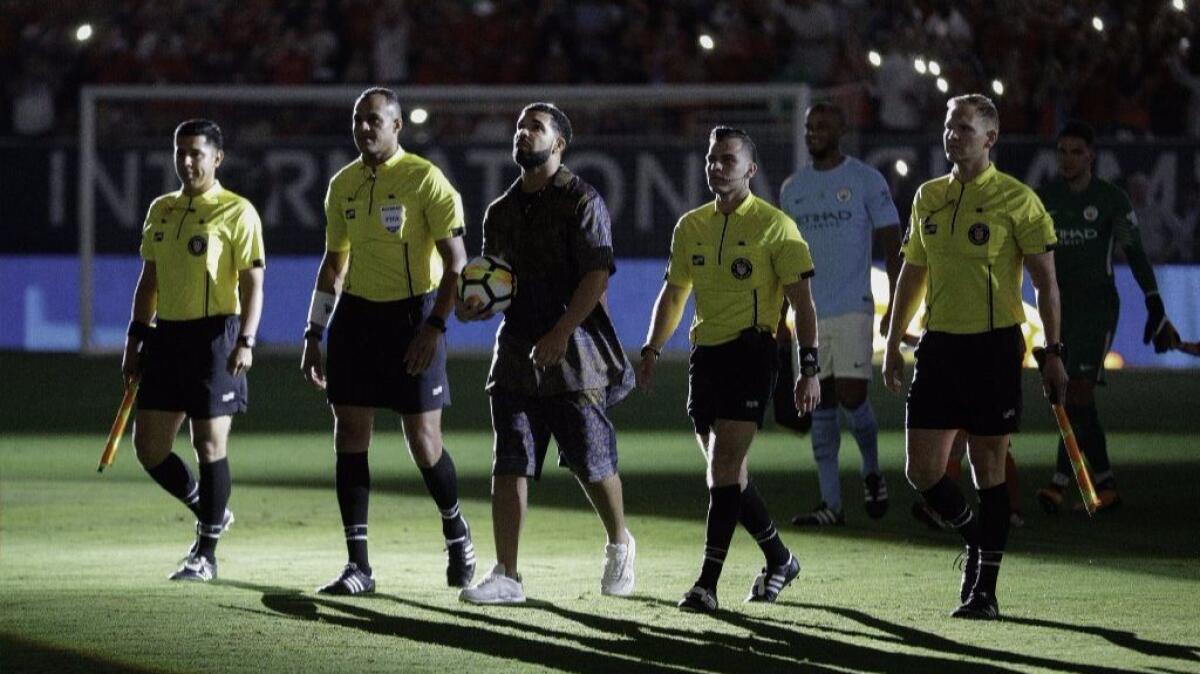
So in 2014 German giant Bayern Munich opened a marketing office in New York, then added another in Asia following Bundesliga rival Borussia Dortmund, which had already set up shop in Singapore. FC Barcelona opened offices in Hong Kong and along New York’s Park Avenue, announced plans to fund a team in the National Women’s Soccer League and set up youth academies and clinics across the U.S.
Other teams have started similar projects or joined with existing clubs and academies in the U.S.
But Manchester City has been more ambitious. In 2013, it partnered with the New York Yankees on an MLS expansion team, New York City Football Club, and a year later it acquired, then rebranded, one of the two Melbourne teams in Australia’s A-league. That same year CFG joined automaker Nissan in the ownership group of the Yokohama Marinos of Japan’s J-League, and last April it bought second-division Uruguayan side Atletico Torque.
China is the next likely destination.
CFG has also invested heavily in its women’s affiliate, which the group formally took under its wing in 2012, moving the team into its 7,000-seat academy stadium, then this year signing U.S. star Carli Lloyd, a two-time world player of the year.
“If you look at all the top European clubs, most of them would say that they have a global fan base,” said Omar Berrada, CFG’s commercial chief, who puts City’s support at 400 million fans worldwide. “What’s different and unique about the City Football Group is the fact that we are able to have a permanent presence in key strategic markets that allow us to engage with the fans on a year-long basis, even though Manchester City itself is not there.
“This is really a model that hasn’t been implemented before.”

The three first-division teams fully owned by the group share more than just the City name, though. They also share similar crests, blue-and-white team colors, sponsorship opportunities and an attractive, possession-driven playing style. The synergies go beyond that to include marketing, scouting and player development, even architecture: When New York City FC announced plans to build a sprawling base for its academy, it recruited famed Uruguayan architect Rafael Vinoly, who designed CFG’s academies in Manchester and Melbourne.
“This is a long-term investment in soccer in the United States, which undeniably is growing,” said Tom Glick, a former minor league baseball, hockey and NBA executive and a former New York City FC president, who is now chief commercial officer for the City Football Group. “It’s a bet as well on Major League Soccer as a business model. This is a league we believe in.”
Despite everything the teams share, group executives insist the idea wasn’t simply to have minor-league affiliates around the globe feeding money, resources, ideas — maybe even players — to the parent club in England. Each team was to be independent and successful, promoting the sport in emerging markets such as New York, Melbourne and Japan and opening fans’ wallets along the way.
“CFG’s strategy contributes to the growth of the game, although I suspect the company’s main goal is to deliver strategic and financial returns to their shareholders,” said Michael Goldman, an assistant professor in the sport management program at the University of San Francisco. “CFG’s approach is to integrate football, marketing, media, commercial, training and medical care across their subsidiaries, in order to provide these returns.”
But there are vast differences in the way the sport is played and administered in the English Premier League and the way it is run in the U.S. and Australia. Consider just the payroll for starters. The MLS has a team salary cap of $3.845 million, $1.2 million more than Australian teams can spend. Manchester City reportedly gave its lowest-paid first-team player the equivalent of the two salary caps combined last season.
“All of this has been a learning process,” Glick said. “We went into it intending to learn and intending to be patient but ultimately knowing that we can bring the skills and the expertise that we have.
“Ultimately we’re playing a game of soccer a couple of times a week. And that’s something that we know how to do.”
Reyna, a former U.S. national team captain, member of four World Cups and now CFG’s top soccer executive in the country, said he swaps ideas with group executives on a monthly conference call and at an annual retreat in England.
“There’s certainly cross-departmental learning that has happened from one club to the other,” he said of CFG, which is split into two divisions, one for soccer and one for marketing. “How do we approach sponsorship locally, globally, in different ways? That makes it really interesting and exciting in trying to find ways to collaborate to help our partners across the ocean.”
That sharing extends beyond the executive suites to the locker rooms. Former Manchester City midfielder Patrick Viera, who got his first coaching job with the Manchester City reserves, is in his second season as manager for New York City, and three of his five assistants have City pedigrees as well.
“It’s not so much about the brand. It’s more like a family; an association of clubs that share probably a similar vision and similar values,” said Manchester City captain Vincent Kompany. “So you feel an association. You get to see so many different ways of looking at the game that come from different countries.
“But I think each club has its own identity.”
Yet all the spokes on the CFG wheel lead back to Manchester, where CFG has built a vast 80-acre training complex and development academy that will be difficult to replicate elsewhere.
The Etihad Campus, built on the site of an abandoned coal mine that dates to the 17th century, is named for the Emirati airline that is the team’s chief partner. The facility includes 16 ½ soccer fields — the half field for goalkeeper training — three gyms, cryotherapy and ultrasound rooms, locker rooms, six swimming pools and 80 bedrooms for academy prospects and first-team players who want to spend the night after training or before games at the adjacent 55,000-seat Etihad Stadium.
More than 450 players — from 6-year-olds to City’s first team — train there each week.
CFG plans for world domination shines through at the complex, where one large room in the main building boosts a New York decor, a nod to the team’s MLS sister club, and another has an Australian theme. Emblazoned on a well near the entrance is a quote from Sheikh Mansour, the team’s 46-year-old owner and the driving force behind CFG’s ambitious expansion.
“We are building a structure for the future not just a team of all-stars,” it reads.
Glick said, “I’m not aware of another organization that’s doing what we’re doing in terms of the group of clubs and leagues around the world and the investment that we’re making in the women’s game, the global foundation that we’ve created, the infrastructure that we’re doing, the marketing divisions and services.” He had to pause to take a breath before adding:
“We’re focused on this because we think it’s relevant to the future of the sport. This, for us, is a sustainable investment.”
Follow Kevin Baxter on Twitter @kbaxter11


